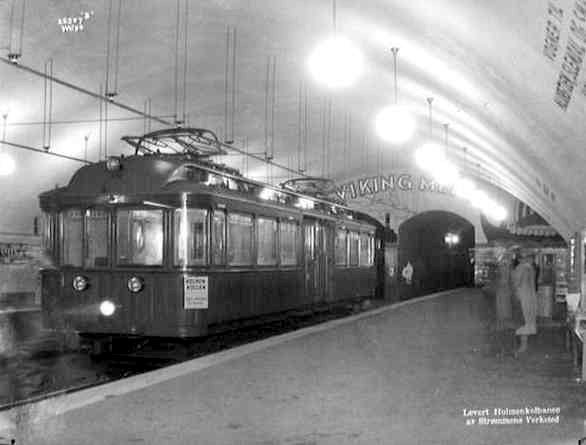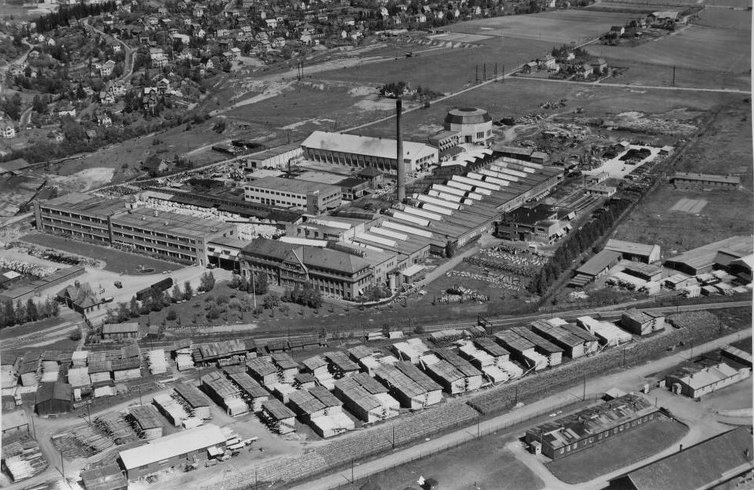|
├śkern
├śkern was a farm in the former municipality of Aker, Norway, and is currently a district in the borough of Bjerke in the city of Oslo. It includes the neighborhoods of Refstad, Risl├Ėkka, Brobekk, Nordre Hovin, Aker Sykehus, Bjerkebanen, and ├śkern Senter. Infrastructure The district is served by the Grorud Line of the Oslo Metro. A larger business centre is located near the ├śkern Station. Among the institutions at ├śkern is the headquarters of the Norwegian State Educational Loan Fund. The Alna Line, used for freight trains between the Trunk Line and the Gj├Ėvik Line, from Alnabru to Grefsen, passes through ├śkern, close to the business centre of ''├śkernsenteret''. History The farm of ├śkern was among the oldest in the former municipality of Aker. The earliest preserved document where ├śkern is mentioned dates back to 1279. In the 13th century the farm was owned by landowner Audun Hugleiksson, and it later became a property of the Church. Among the owners from the 17t ... [...More Info...] [...Related Items...] OR: [Wikipedia] [Google] [Baidu] |
├śkern (station)
├śkern is a metro station on the No 5, Grorud Line of the Oslo Metro system, situated between stations Hasle and Risl├Ėkka in the lower parts of the Grorud Valley. It is located 2.7 km ( the geodesic distance) northeast of station Stortinget (the Parliament). The station is part of the original stretch of the Grorud Line, and was opened on 16 October 1966. In 2010, the station was refurbished and partly rebuilt. New platforms are fitted with snowmelt systems. The station is also located at the intersection of the metro line and the Ring 3 highway, which encircles most of the inner part of the city of Oslo. The area around ├śkern is dominated by private enterprises, with the ├śkern N├”ringspark office park and the ├śkern shopping centre in the immediate vicinity. Transfer buses ├śkern is a transportation hub with connections to bus lines: :23 (Lysaker - Simensbr├źten) :24 (Rush hour bus: Fornebu - Brynseng) :28 (Rush hour bus: Fornebu via Carl Berners Plass and Major ... [...More Info...] [...Related Items...] OR: [Wikipedia] [Google] [Baidu] |
Grorud Line
The Grorud Line () is a line on the Oslo Metro between T├Ėyen (station), T├Ėyen and Vestli (station), Vestli in Oslo, Norway. Built as a mix of underground, at ground level and as an elevated line, it runs through the northern part of Groruddalen, serving such neighborhoods as Grorud, Roms├źs and Stovner. Line 5 runs along the entire line four times per hour. Line 4 runs between Vestli and ├śkern before branching off on the L├Ėren Line to get onto the Ring Line (Oslo), Ring Line. With 40,000 daily riders, the Grorud Line is the busiest branch of the metro. Proposals for an urban railway through the upper parts of Groruddalen were first articulated in public documents in 1919. Planning started in the late 1940s and the line was politically approved in 1954, along with three other metro lines and the Common Tunnel. Construction started in 1956 and was part of a process to transform Groruddalen into a residential area. The first part of the Grorud Line, from T├Ėyen to Grorud (statio ... [...More Info...] [...Related Items...] OR: [Wikipedia] [Google] [Baidu] |
Bjerkebanen
Bjerkebanen, often simply called Bjerke, is a neighborhood in the ├śkern district of the Bjerke (borough), Bjerke borough in northeastern Oslo, Norway. It lies in the Grorud Valley. The area is dominated by the Bjerke Travbane, Bjerke Race Track, a harness racing track (established in 1928), with its stadium building, stable building, and a large parking lot. The area is bordered by the Refstad neighborhood to the west and Brobekk to the east, and by Risl├Ėkka and Vollebekk to the south. The north side is bounded by Norwegian National Road 4 and ''Trondheimsveien'' (Trondheim Street), separating the area from the ├ģrvoll neighborhood. Bjerkebanen mostly consists of residential buildings detached houses, townhouses, and small apartment buildings. ''Refstadveien'' (Refstad Street) and ''├śkernveien'' (├śkern Street) are the two largest streets in the area. References Neighbourhoods of Oslo {{Oslo-geo-stub ... [...More Info...] [...Related Items...] OR: [Wikipedia] [Google] [Baidu] |
Oslo Metro
The Oslo Metro ( or or simply ) is the rapid transit system of Oslo, Norway, operated by Sporveien T-banen on contract from the transit authority Ruter. The network consists of five lines that all run through the city centre, with a total length of , serving 101 stations of which 17 are underground or indoors. In addition to serving 14 out of the 15 boroughs of Oslo, two lines run to Kols├źs and ├śster├źs, in the neighbouring municipality of B├”rum. In 2016, the system had an annual ridership of 118 million. The first rapid transit line, the Holmenkollen Line, opened in 1898, with the branch R├Ėa Line opening in 1912. It became the first Nordic underground rapid transit system in 1928, when the underground line to Nationaltheatret was opened. After 1993 trains ran under the city between the eastern and western networks in the Common Tunnel, followed by the 2006 opening of the Ring Line. All the trains are operated with MX3000 stock. These replaced the older T1000 stock ... [...More Info...] [...Related Items...] OR: [Wikipedia] [Google] [Baidu] |
Alna Line
The Alna Line () is a railway line between Alnabru and Grefsen in Oslo, Norway. The single track line allows direct access between the Trunk Line and the Gj├Ėvik Line, without having to pass via Oslo Central Station. The line is electrified and is owned by the Norwegian National Rail Administration. It is exclusively used by freight trains, and allows trains on the Bergen Line to reach Alnabru Freight Terminal. The line was built along with the Gj├Ėvik Line and was opened on 20 January 1901. The line saw some passenger traffic until the Gj├Ėvik Line was completed to Oslo East Station in 1902. From 1909 the Alna Line has been used for freight trains from Bergen, and the line was electrified in 1961. There have been proposals to make the line part of a diagonal line as part of the Oslo Commuter Rail. Route The Alna Line is long and connects the Gj├Ėvik Line at Grefsen Station to Alnabru Freight Terminal on the Trunk Line. The line is single track, standard gauge and electrifie ... [...More Info...] [...Related Items...] OR: [Wikipedia] [Google] [Baidu] |
Bjerke (borough)
Bjerke is a borough of the city of Oslo, Norway. The most densely populated residential areas, including the high-rise apartment blocks of Linderud, are located along Trondheimsveien ( Norwegian National Road 4). The shopping centre at Linderud is also home to the borough council's administrative headquarters. The northern areas of the borough are bordered by the vast woodlands of Oslomarka. Bjerke Upper Secondary School is located here. Districts * Linderud * Lofthus (on the border with Nordre Aker borough) * Tonsenhagen * ├ģrvoll * Veitvet * ├śkern * Risl├Ėkka Politics As a borough of Oslo, Bjerke is governed by the city council of Oslo as well as its own borough council. The council leader is Lars Fuglesang from the Labour Party and the deputy leader is Hans Husum, of the Socialist Left Party. The Labour Party has the most seats. The 15 seats are distributed among the following political parties for the 2019-2023 term: * 5 from the Labour Party (''Arbeiderpa ... [...More Info...] [...Related Items...] OR: [Wikipedia] [Google] [Baidu] |
Nils Stian Stiansen
Nils Stian Stiansen (16 August 1900 ŌĆō 25 July 1974) was a Norwegian building contractor. He was born in Fevik Fevik is a coastal village and popular seaside resort in the municipality of Grimstad, Agder County Municipality, Agder County, Norway. Situated along the Skagerrak, Skagerrak coast, Fevik lies approximately 7 kilometers (4.3 mi) northeast of ..., a son of Peder Stiansen and Inga Marie Knudsen. He operated as building contractor in Oslo from 1924, and constructed a number of residential houses and larger building complexes, a total of about 5,000 apartments. Among his projects were Bakkehaugen, Hoff Terrasse, ├śvrevollkollektivet, ├śkernbr├źten and Tokerud. He also constructed the Embassy of the United States, Oslo, American Embassy and the American Lutheran Congregation, Oslo, American Lutheran Church in Oslo. He was decorated Knight of the Order of St. Olav in 1960. He died in 1974 and was buried at Vestre gravlund. (as "Nils R. Stiansen") References 19 ... [...More Info...] [...Related Items...] OR: [Wikipedia] [Google] [Baidu] |
Anton Tschudi
Anton Tschudi (12 April 1848 ŌĆō 1914) was a Norwegian landowner. He was born in T├Ėnsberg and was of Swiss descent. His father, Peter Tschudi (1812ŌĆō1900) owned the Vall├Ėe farm in Sem Municipality, outside of the city of T├Ėnsberg. His sister Clara was a well-known writer, and his brother Oscar was a judge. Tschudi was mostly active with buying and selling land in Aker, now a part of Oslo. In 1898 he bought the 400-acre farm ├śvre H├Ėybr├źten, which was parceled out in 1905. Solemskogen near Maridalsvannet was bought in 1897 and parceled out in 1903, in addition he parceled out ├śkern as well. Tschudi was also active in B├”rum. In 1912 he bought Haslum, Vestre Haslum, which soon was split in 360 lots and sold. The area was nicknamed Tschudimarka. Tschudi had a substantial effect on the suburbanization of Oslo Oslo ( or ; ) is the capital and most populous city of Norway. It constitutes both a county and a municipality. The municipality of Oslo had a population of in 2 ... [...More Info...] [...Related Items...] OR: [Wikipedia] [Google] [Baidu] |





